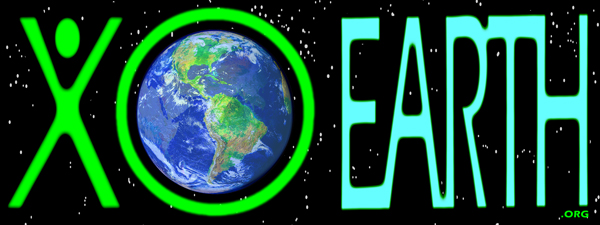____ environmental impact of beef ____ (compared to chicken/fish/eggs, dairy, and fruits/ vegetables) Estimated carbon footprint, loss of natural habitat potential for one year, loss of plant and animal life potential for one year in natural habitat and/or extinction potential from making, packaging, shipping and/or using these products or services. |
|||||
| Beef – 1 kilogram (2.2 pounds)
CO2 from Richard Heede xoearth .net/ xoe/ p/DailyCarbonCalcsDec08.pdf. [[#ref1]] 1% of the CO2 from shipping to retailer. |
Some of the materials used to raise 1 kilogram (2.2 pounds) of beef.
fertilizer, grain, pesticides, antibiotics, gasoline |
CO2 released to raise 1 kilogram (2.2 pound) of beef.
22.1 kg 48.6 lb |
Loss of natural habitat potential for one year to raise 1 kilogram (2.2 pound) of beef.
17 m^2 183 ft^2 |
Loss of native plant and animal life potential to raise 1 kilogram (2.2 pound) of beef.
53 kg 116 lb |
How many kilogram of beef it takes to trigger 1 potential species extinction.
8.8 million |
| Chicken/ Fish/ Eggs – 1 kilogram (2.2 pounds)
CO2 from Richard Heede xoearth .net/ xoe/ p/DailyCarbonCalcsDec08.pdf. [[#ref1]] 3%-7% is CO2 from shipping to retailer. |
Some of the materials used to raise 1 kilogram (2.2 pounds) of chicken/ fish/ eggs.
fertilizer, grain, pesticides, gasoline, diesel fuel. |
CO2 released to raise 1 kilogram (2.2 pound) of chicken/ fish/ eggs.
5.96 kg 13 lb |
Loss of natural habitat potential for one year to raise 1 kilograms (2.2 pound) of chicken/ fish/ eggs.
4.6 m^2 49 ft^2 |
Loss of native plant and animal life potential to raise 1 kilograms (2.2 pound) of chicken/ fish/ eggs.
14.3 kg 31.4 lb |
How many kilograms of chicken/ fish/ eggs it takes to trigger 1 potential species extinction.
32.7 million |
| Dairy products – 1 kilogram (2.2 pounds)
CO2 from Richard Heede xoearth .net/ xoe/ p/DailyCarbonCalcsDec08.pdf. Includes shipping to retailer. [[#ref1]] 3%-7% is CO2 from shipping to retailer. |
Some of the materials used to make 1 kilogram (2.2 pounds) of dairy.
fertilizer, grain, water, pesticides, antibiotics, gasoline, diesel fuel. |
CO2 released to make 1 kilogram (2.2 pound) of dairy products.
4.13 kg 9.1 lb |
Loss of natural habitat potential for one year to make 1 kilograms (2.2 pound) of dairy products.
3.2 m^2 34 ft^2 |
Loss of native plant and animal life potential to make 1 kilograms (2.2 pound) of dairy products.
9.9 kg 22 lb |
How many kilograms of dairy products it takes to trigger 1 potential species extinction.
47 million |
| Fruits/ Vegetables – 1 kilogram (2.2 pounds)
CO2 from Richard Heede xoearth .net/ xoe/ p/DailyCarbonCalcsDec08.pdf. [[#ref1]] 6%-11% is CO2 from shipping to retailer. |
Some of the materials used to grow 1 kilogram (2.2 pounds) of fruits/ vegetables.
water, pesticides, fertilizer, gasoline, diesel fuel. |
CO2 released to grow 1 kilogram (2.2 pound) of fruits/ vegetables.
1.59 kg 3.5 lb |
Loss of natural habitat potential for one year to grow 1 kilograms (2.2 pound) of fruits/ vegetables.
1.2 m^2 13 ft^2 |
Loss of native plant and animal life potential to grow 1 kilograms (2.2 pound) of fruits/ vegetables.
3.8 kg 8.4 lb |
How many kilograms of fruits/ vegetables it takes to trigger 1 potential species extinction.
123 million |
==Summary==
The production of 1 kilogram (2.2 pounds) of beef results in about 22.1 kilograms (49 pounds) of CO2 emissions – including production of grains and feed, methane released from the cow’s digestion adjusted as a CO2 equivalent, materials, production and shipping.[[#ref2]] pubs.acs.org/doi/full/10.1021/es702969f
The loss of natural habitat potential for one year from 1 kilogram (2.2 pounds) of beef is estimated to be 17 square meters (183 square feet).
==Notes==
“… a totally “localized” diet reduces GHG [green house gas] emissions per household equivalent to 1000 miles/yr (1600 km/yr) driven, while shifting just one day per week’s calories from red meat and dairy to chicken/fish/eggs or a vegetable-based diet reduces GHG emissions equivalent to 760 miles/yr (1230 km/yr) or 1160 miles/yr (1860 km/yr), respectively. Shifting totally away from red meat and dairy toward chicken/fish/eggs or a vegetable-based diet reduces GHG emissions equivalent to 5340 mi/yr (8590 km/yr) or 8100 mi/yr (13000 km/yr), respectively. [[#ref1]]
==References==
1. Richard Heede xoearth .net/ xoe/ p/DailyCarbonCalcsDec08.pdf
3. Scientific American February, 2009 14.8 pounds of CO2 pound for pound [of beef]
4. Anderson, Kathryn (2007) Food, a paper for “Toward an Ethical CO2 Emissions Trajectory for Princeton”, p. 14: conventional beef averages 13.04 lb CO2e per lb ground beef.
==External links==
en.wikipedia.org/wiki/Beef
[[category:Food]] [[category:Products]]

Leave a Reply
You must be logged in to post a comment.